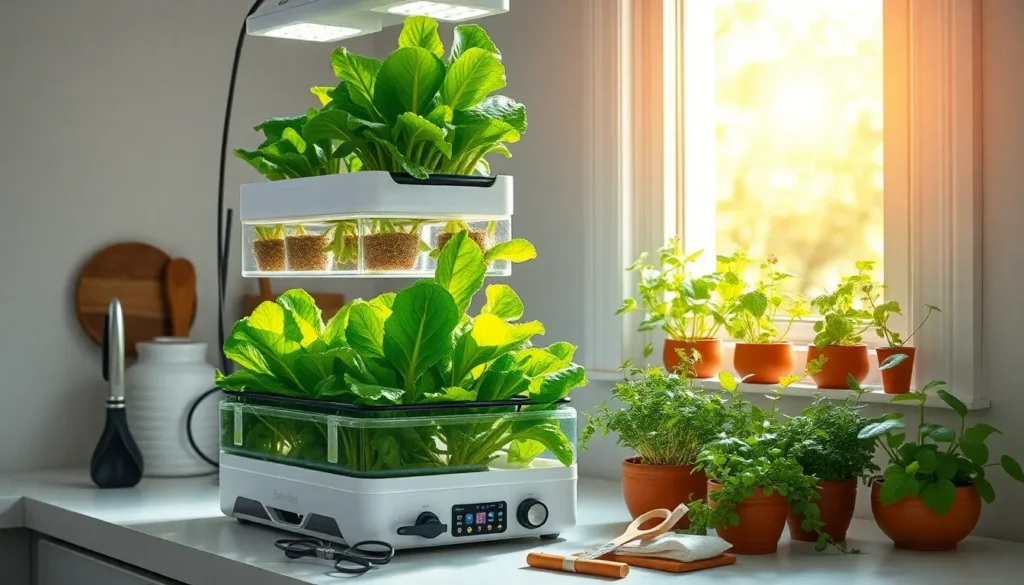Imagine cultivating lush, vibrant greens or plump, juicy tomatoes right in your living room, with no soil in sight. Hydroponic gardening, a delightful blend of science and nature, allows you to do just that, offering a sustainable and efficient way to grow plants indoors. Whether you’re a novice just dipping your toes into the world of gardening or a seasoned horticulturist seeking new challenges, hydroponics opens up a realm of possibilities that are both innovative and rewarding.
At its core, hydroponic gardening is about more than just growing plants; it’s about crafting an ecosystem where plants can thrive in water-based solutions, rich with nutrients. This approach not only maximizes growth potential but also conserves water and space, making it an ideal choice for urban dwellers and eco-conscious gardeners alike. In this article, you’ll learn the essentials of setting up your own hydroponic system at home, discover the types of plants best suited for this method, and gain practical tips to ensure your garden flourishes.
The beauty of hydroponics lies in its versatility and adaptability, making it a perfect fit for various lifestyles and spaces. By the end of this exploration, you’ll not only understand the mechanics behind this fascinating form of gardening but also feel equipped and inspired to embark on your own hydroponic journey. Whether you have a large home or a small apartment, hydroponic gardening can transform your space and the way you think about growing food, bringing the joy of gardening directly to your doorstep.
Understanding Hydroponic Basics
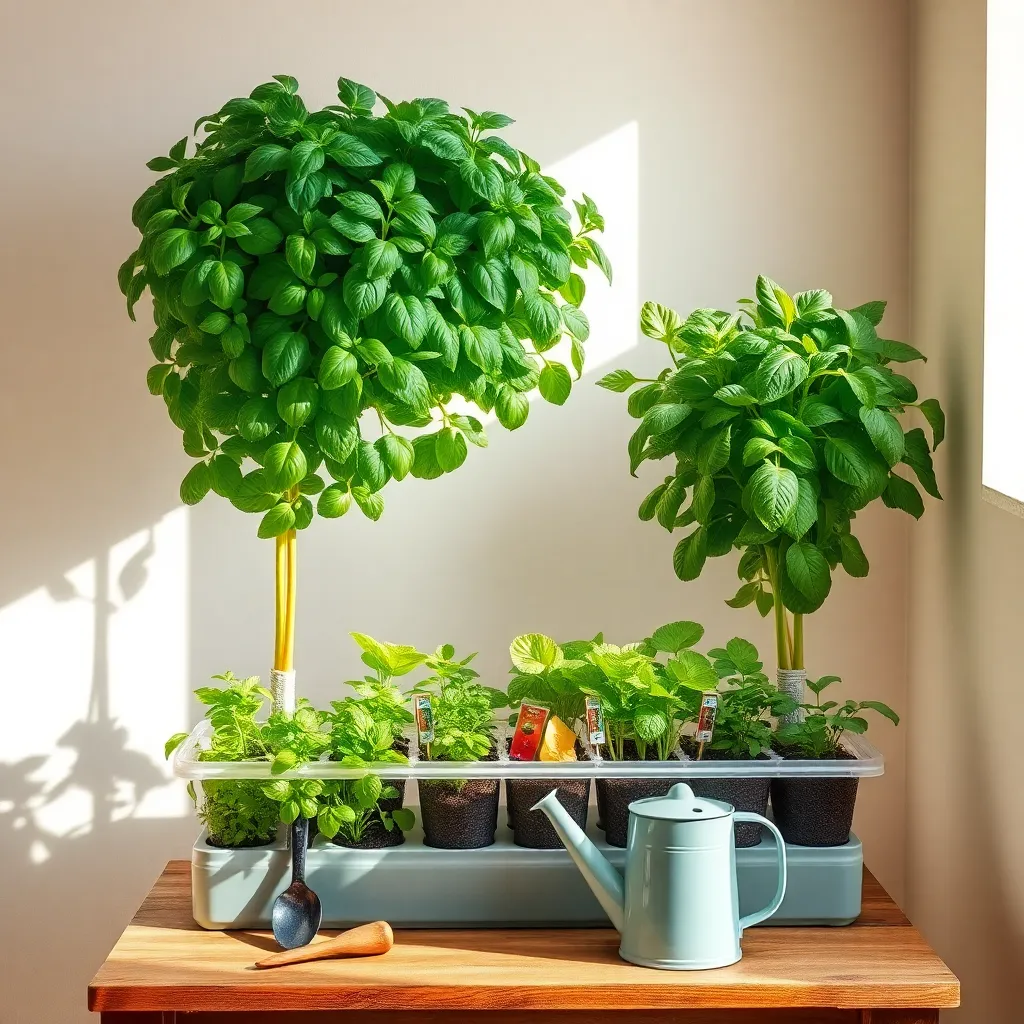
Hydroponic gardening is an innovative method of growing plants without soil, using nutrient-rich water as the growing medium. This approach allows you to grow plants faster and more efficiently, making it ideal for gardeners with limited space.
To get started with hydroponics, you’ll need to decide on a system type, such as deep water culture, nutrient film technique, or aeroponics. Each system has unique benefits, so consider your space and plant choices when making your decision.
It’s crucial to monitor the pH and nutrient levels in your hydroponic system regularly. Aim to keep the pH level between 5.5 and 6.5, as this range is optimal for nutrient absorption by most plants.
For those new to hydroponics, start with easy-to-grow plants like lettuce, herbs, or strawberries. These plants thrive in hydroponic setups and will help you gain confidence as you learn the system’s nuances.
Once you’re comfortable with the basics, you may want to experiment with different plant varieties or even create a mixed system. Combining hydroponics with vertical gardening or aquaponics can maximize space and yield, especially in urban settings.
Setting Up Your Home System

When setting up your home hydroponic system, start by selecting a suitable location with ample light and stable temperatures. It’s crucial to ensure that the space is free from drafts and extreme temperature fluctuations, as these can stress your plants.
Begin with a simple system like a deep water culture (DWC) or nutrient film technique (NFT) to gain confidence in hydroponics. These systems are affordable and easy to assemble, making them ideal for beginners while still effective for experienced gardeners.
Ensure you have reliable access to power and water, as these are essential for maintaining your system’s needs. Consider investing in a backup power source to protect your plants from unexpected outages, especially if you’re growing in areas prone to power cuts.
Use a nutrient solution tailored to the specific plants you are growing, as different plants have varied nutrient requirements. Regularly monitor and adjust the pH and nutrient levels, aiming for a pH range of 5.5 to 6.5 for optimal growth.
Advanced gardeners can experiment with adding supplemental lighting, such as LED grow lights, to extend the growing season and enhance plant growth. Ensure that your lighting setup provides the correct spectrum and intensity for the plants you are cultivating.
By following these steps and continuously learning, you’ll create a thriving home hydroponic system that is both rewarding and sustainable. Remember, successful hydroponic gardening is a balance of science and observation, so enjoy the process and adjust as needed.
Choosing Suitable Hydroponic Plants
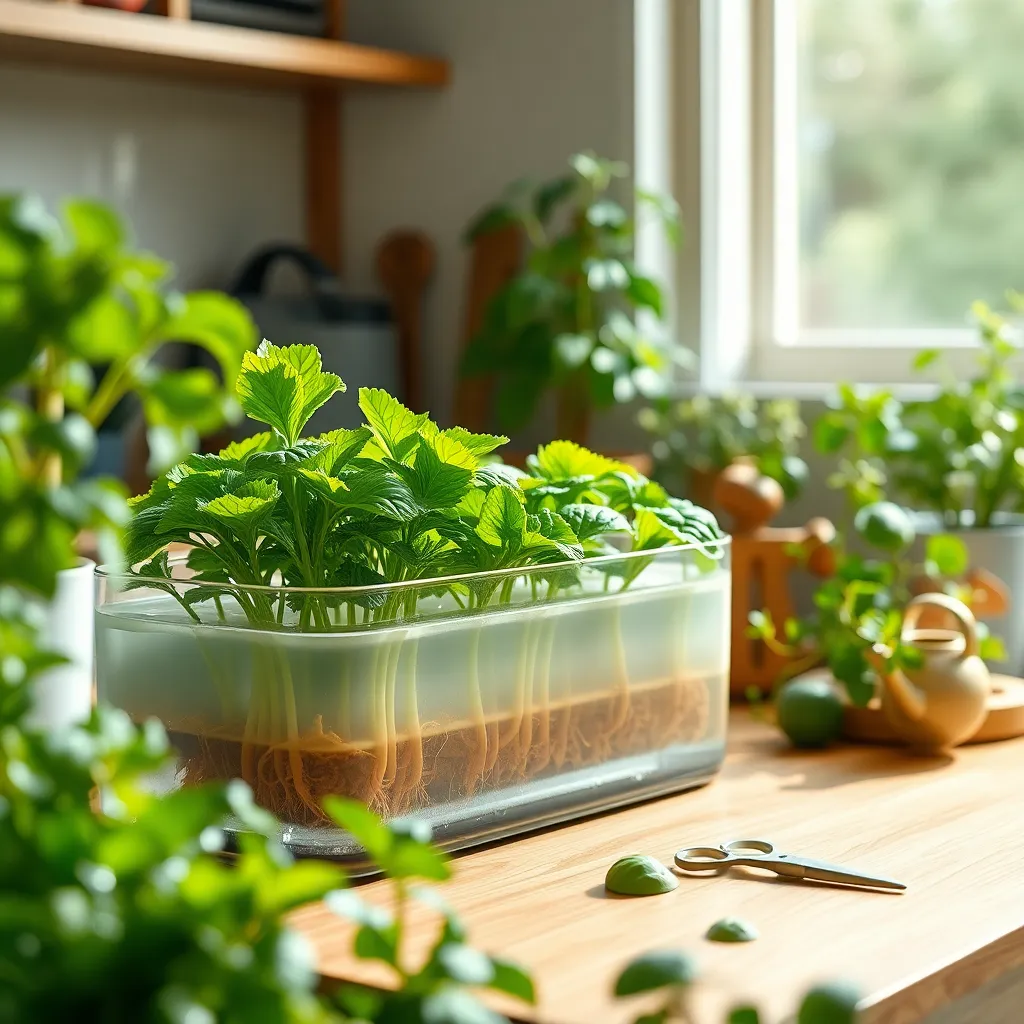
Choosing the right plants for your hydroponic system is crucial to ensure a successful harvest. Some of the best choices include leafy greens, herbs, and certain fruits that thrive in a water-based environment.
Leafy greens such as lettuce, spinach, and kale are ideal for beginners due to their fast growth and low maintenance requirements. They require a nutrient-rich water solution and should be exposed to around 12-16 hours of light daily for optimal growth.
Herbs like basil, mint, and parsley are also excellent choices for hydroponic systems. They grow quickly and can be harvested regularly, making them a practical and rewarding option for both novice and seasoned gardeners.
For those looking to try fruits, strawberries and tomatoes can be grown hydroponically with some additional care. Ensure they have adequate support structures and maintain a balanced pH level in your nutrient solution to promote healthy fruit development.
Advanced gardeners might experiment with more challenging plants like peppers or cucumbers. These plants require precise temperature and humidity control, making them a perfect project for those ready to expand their hydroponic skills.
Regardless of the plants you choose, monitoring nutrient levels and water quality is key to your hydroponic garden’s success. Regularly check and adjust your system to maintain an environment conducive to healthy plant growth.
- Begin with easy-to-grow plants to build confidence.
- Ensure adequate light and support structures for fruiting plants.
- Regularly test and adjust the pH and nutrient levels.
Maintaining Nutrient Solutions
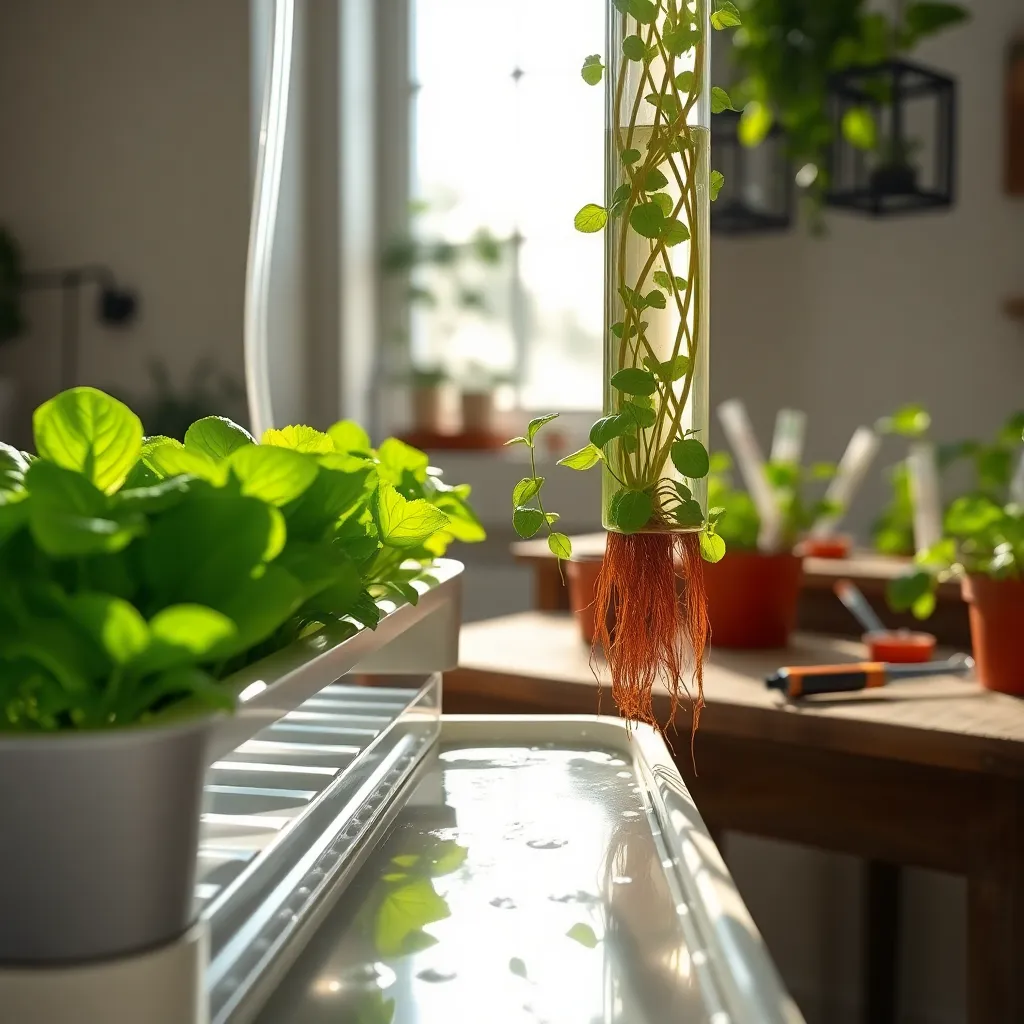
Maintaining your nutrient solution is crucial for the success of your hydroponic system. It involves regularly checking and adjusting the solution to ensure your plants receive the right balance of nutrients.
Start by monitoring the pH levels of your nutrient solution, as this affects nutrient uptake. Ideally, your solution should have a pH level between 5.5 and 6.5, which is optimal for most hydroponic plants.
In addition to pH, regularly check the electrical conductivity (EC) of your solution. The EC indicates the nutrient concentration and should be adjusted based on the specific requirements of the plants you are growing.
To maintain a healthy system, replace your nutrient solution every two to three weeks. This prevents the buildup of salts and ensures your plants have access to fresh nutrients.
For advanced growers, consider using a nutrient schedule tailored to the specific growth stages of your plants. This involves adjusting nutrient levels to support the different phases of plant development, such as vegetative growth and flowering.
Troubleshooting Common Issues
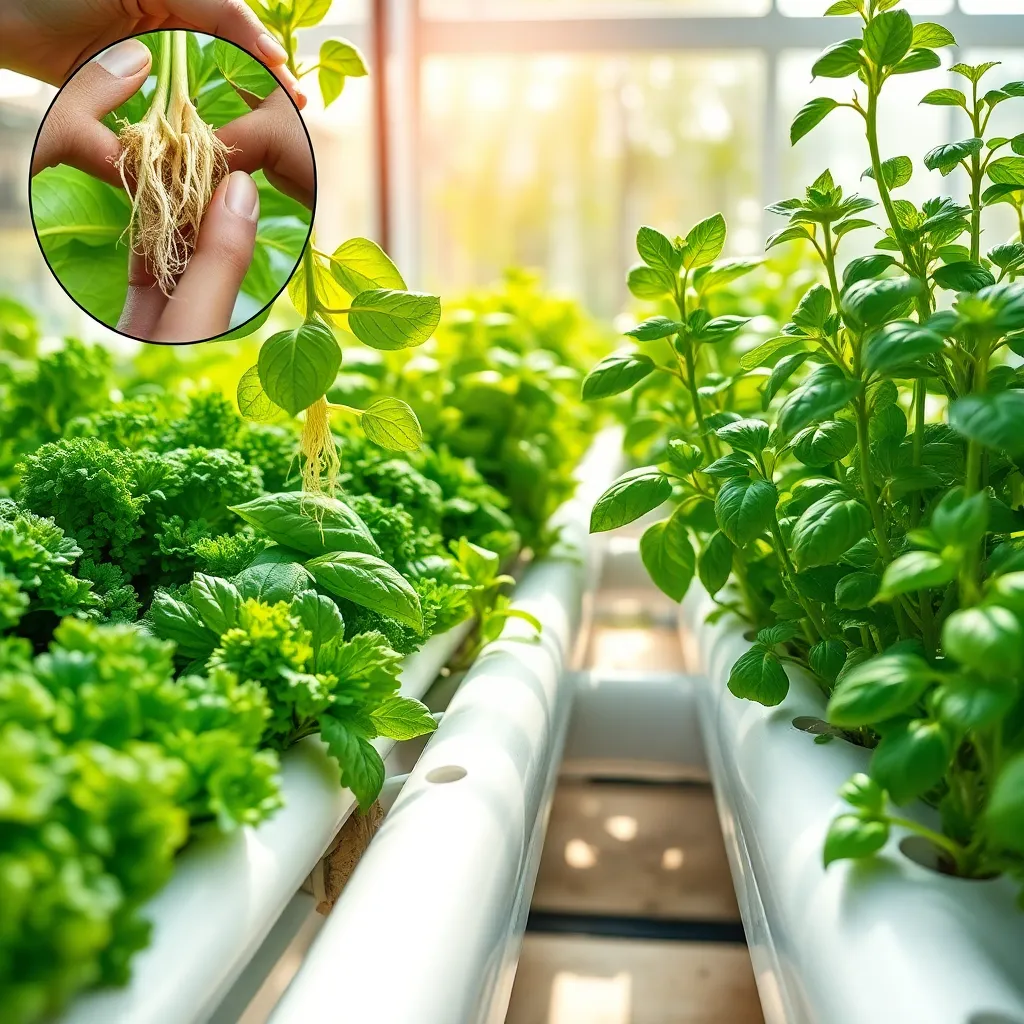
Hydroponic systems can face issues with nutrient imbalances, which often manifest as yellowing leaves or stunted growth. To address this, perform a regular check of your nutrient solution’s pH levels, keeping them between 5.5 and 6.5, as this range ensures optimal nutrient uptake.
If your plants appear wilted or have slow growth, it might be due to insufficient oxygen in the water. Adding an air stone to your reservoir can help increase oxygenation, promoting healthier root development and more robust plant growth.
Algae growth is another common issue that can occur in hydroponic systems, often due to excess light exposure. Cover your nutrient reservoir with an opaque lid or material to block light and prevent algae from taking hold, thus maintaining a clean environment for your plants.
Root rot can be a significant challenge, often caused by overwatering or poor drainage. Ensure your hydroponic system allows for proper drainage and airflow around the roots, and consider using a hydrogen peroxide solution to treat affected plants.
Conclusion: Growing Success with These Plants
In exploring the world of hydroponic gardening at home, we’ve uncovered five key relationship concepts: communication, patience, nurturing, adaptability, and shared goals. These principles not only help plants thrive but also serve as the foundation for cultivating strong and healthy relationships. Open communication fosters understanding, patience allows for growth at its own pace, nurturing ensures care and attention, adaptability helps navigate changes, and shared goals create a united path forward.
Now, take a moment to assess which concept resonates most with your relationship and commit to enhancing it today. Whether it’s practicing active listening, showing appreciation, or setting a mutual goal, small steps can lead to significant growth.
As you embark on this journey of relationship enrichment, don’t forget to bookmark this article. It’s a valuable resource you can revisit whenever you need inspiration or guidance.
Remember, the seeds of relationship success are planted with intention and flourish with care. By embracing these principles, you’re well on your way to nurturing a vibrant and lasting connection. Your commitment to growth and understanding is the cornerstone of a flourishing relationship future. Save this guide as your companion on this rewarding journey!

